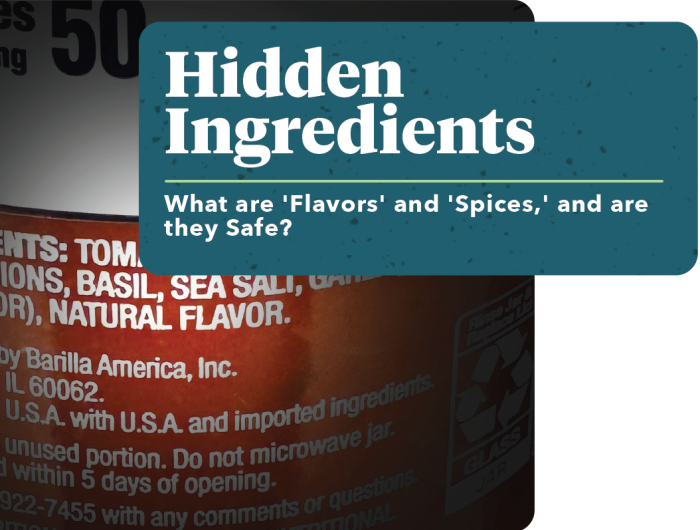Flavor report: Hidden ingredients

What are 'flavors' and 'spices,' and are they safe?
The way a food tastes and smells is important when it comes to choosing what we eat. Food companies engineer foods to ensure they taste and smell appealing by adding flavors and spices. These can be natural substances or chemicals synthesized in a laboratory. They can be a single ingredient—like vanilla extract, dried basil, or a specific chemical—or blends of many ingredients formulated and developed by professional flavorists.
One thing all spices and flavors have in common is that food companies do not actually have to tell consumers which of these substances they have added to a food or beverage. Almost all other food ingredients must be explicitly identified by name in the ingredient list found on food packages. However, federal regulations allow the food industry to use the vague catchall terms “artificial flavor,” “natural flavor,” and “spices” instead of identifying each individual flavor substance by name.
Flavor is a $14 billion global industry with powerhouse trade groups that play outsized roles in dictating which substances are used in our foods. Many factors contribute to the particularly complex problem of flavor: The GRAS loophole and industry influence and control; the thousands of flavors in many thousands of products available to consumers; imprecise food labeling that doesn't give consumers enough information to know what they're eating; and inconsistent regulatory requirements between the FDA and USDA.

